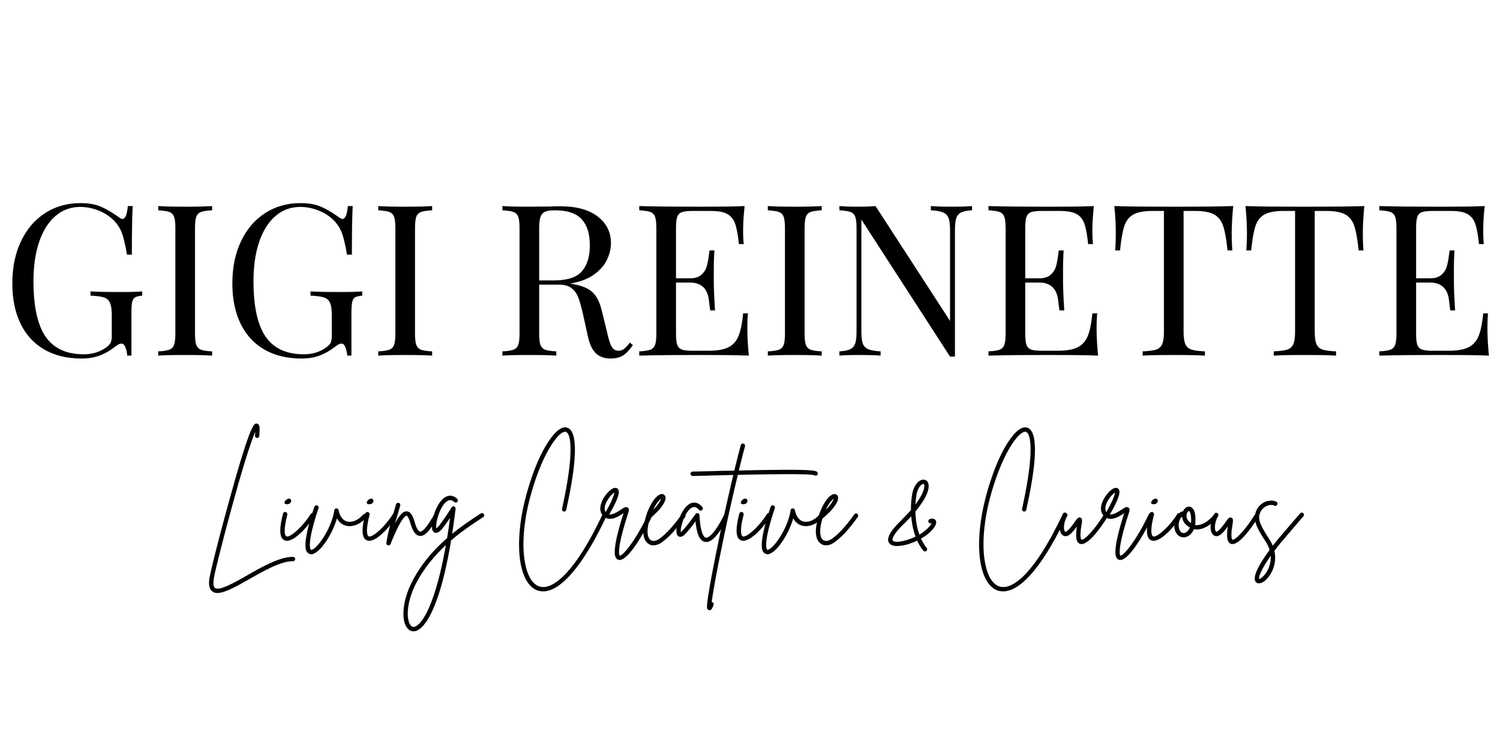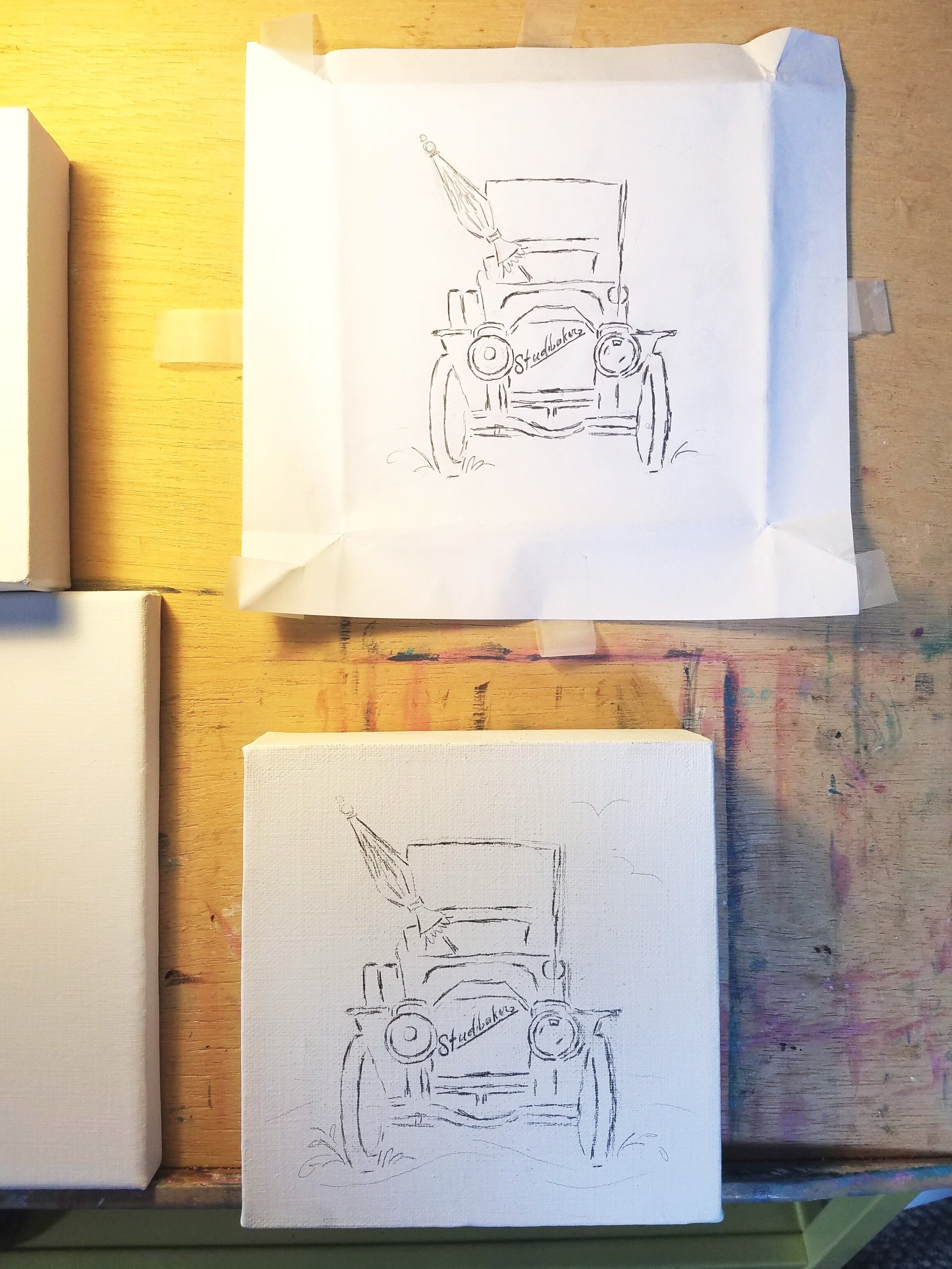How To Transfer Sketches To Canvas
Anyone lost in a good doodle knows, the vision just flows when the pressure is off. That’s the beauty of a sketch. No expensive paints wasted. No clean canvases compromised. Just a cool idea scratched to life in it’s barest form. Yes, you can draw or paint directly on canvas, but sometimes, if there’s going to be a lot of detail, I like to adjust shapes and proportions on paper. It’s like working things out backstage before the real performance. Only problem is, when I’m done, there’s an element of frustration. Frustration and fear of moving the design to another place without losing it’s essence.
If I feel daring, I can eyeball it. If I have a lot of time, I can grid it. But my favorite way to transfer really, is to use graphite paper. Why? Because it’s the closest thing to a Xerox copy without running the canvas through a printer. It maintains proportions, captures details, and since graphite is essentially pencil lead, it’s still erasable, changeable, and make-better-able (if that’s a word).
The graphite paper I’ve been using lately is by Speedball and I found it at my local craft store. It comes with 2 huge sheets of the stuff! Since my sketches are usually small, I can cut one sheet into smaller pieces, and save the larger one for bigger paintings or signs. One of the things I love about this material is I can trace multiple drawings over one piece and still get a dark line. So one package actually lasts a long time.
The paper is thin, like tissue paper, and has a shiny side and a matte side. The shiny side has the graphite coating and is faced down onto the canvas and the sketch is placed on top of the matte side. My cat Crystal has tried her paw at this, but unfortunately, thumbs are necessary to get the job done.
I’ve found two different ways for holding everything in place while I trace. A thumbtack or tape. Word of caution: don’t use a thumbtack on stretched canvas. Only do this on flat canvas board or wood. Canvas board is thick and hard and lets a thumbtack push in partially without poking through the other side. A dent like this can be filled with paint, but an actual hole can damage a stretched canvas.
Anyway, I usually use a thumbtack when I want to be quick. The tack is pushed through the two layers of paper and poked slightly into the canvas board. I use my left hand to hold the tack and paper down, and with my right hand I trace over the sketch.
The pressure I use while tracing varies. I tend to press harder when transferring objects with hard lines and softer when transferring living things like people, animals, and plants. It’s good to have more freedom with the paint on living things. I also try to keep my lines a bit broken. I don’t want to create a coloring book page, just guidelines and important details.
The other way to secure everything, is to use tape. And this is really the better way. You can position the sketch where you want it, fold it around the back, and secure with tape on the top, the bottom, and both sides. This allows my left hand to be free to hold the canvas. This is a must with wrapped canvases because I need to also position a rigid object, like a book or board, behind the canvas, (in between the framework) to create a hard surface to draw against. Holding this and paper with my left hand would be too difficult, so I rely on the tape to hold everything still.
Another thing that varies is whether or not I use fixative to seal the graphite. If the lines are light, I often just go straight to paint. The graphite blends with the paint a little, and can actually help create shadows and dimension early on. If the lines are dark and many though, I spray a fixative over the drawing to keep the painting from becoming too muddy when paint is added. Keep in mind, fixative can be toxic stuff, so if you use it, go outside or to a well ventilated room. And please keep away from pets.
Canvas art can sometimes seem intimidating, but it really shouldn’t be. It’s just another flat surface waiting for expression. I hope this gives you ideas on how to take simple drawings to the next level. This is what works for me, but remember, there are many ways to bring your art to life. Look for what works best for you and don’t forget to get creative! You may discover something new!













